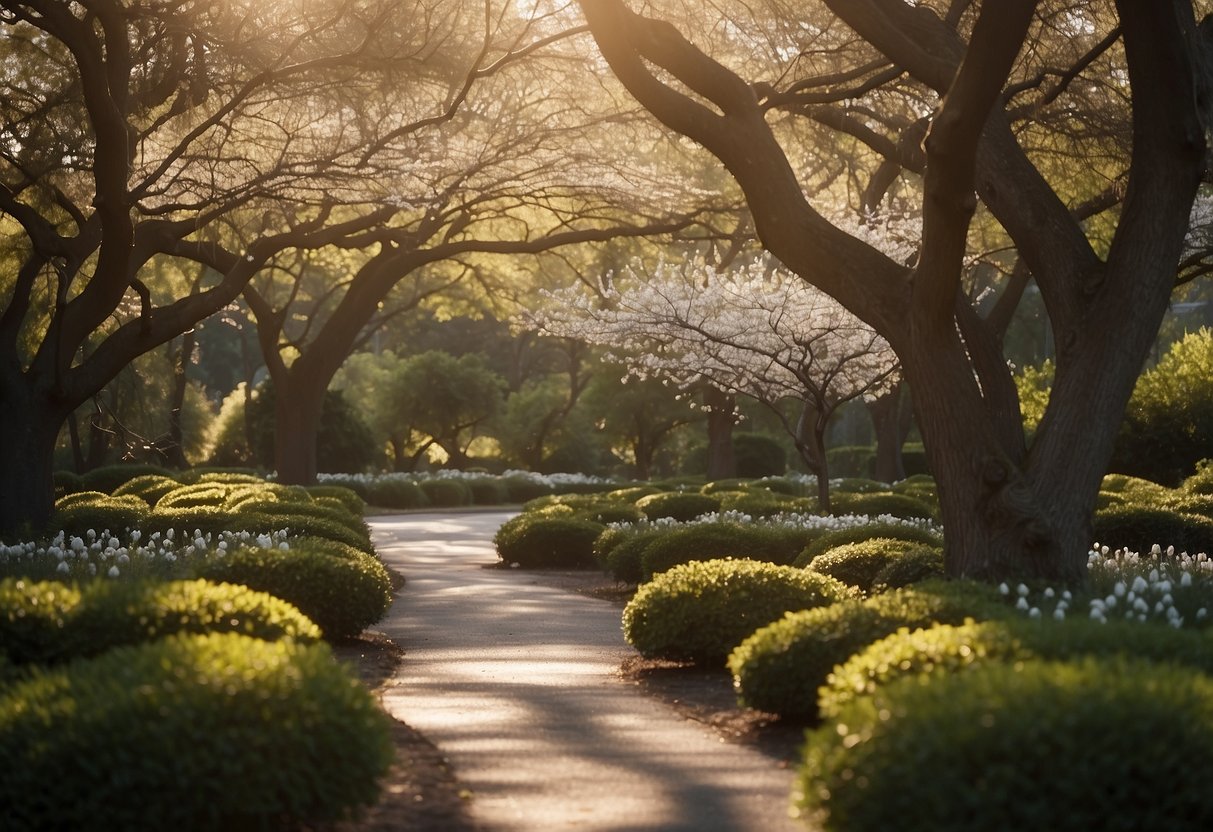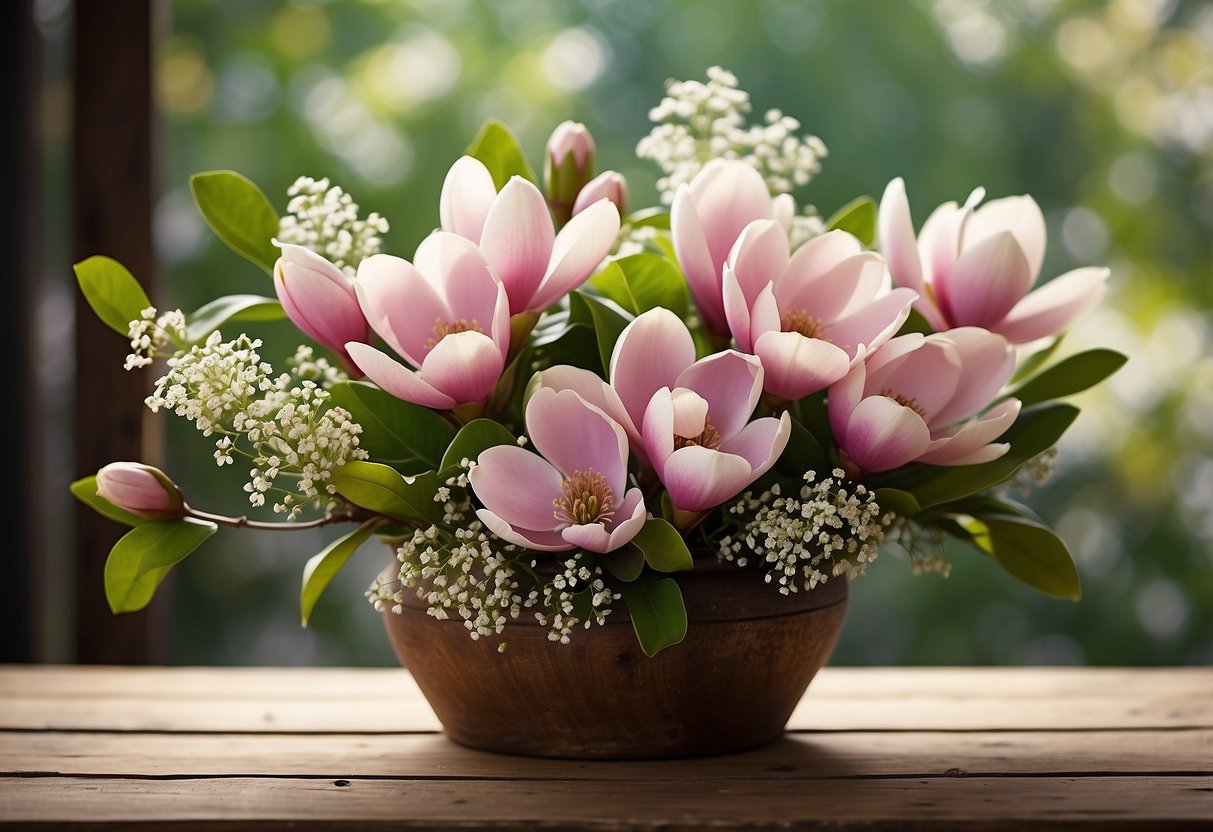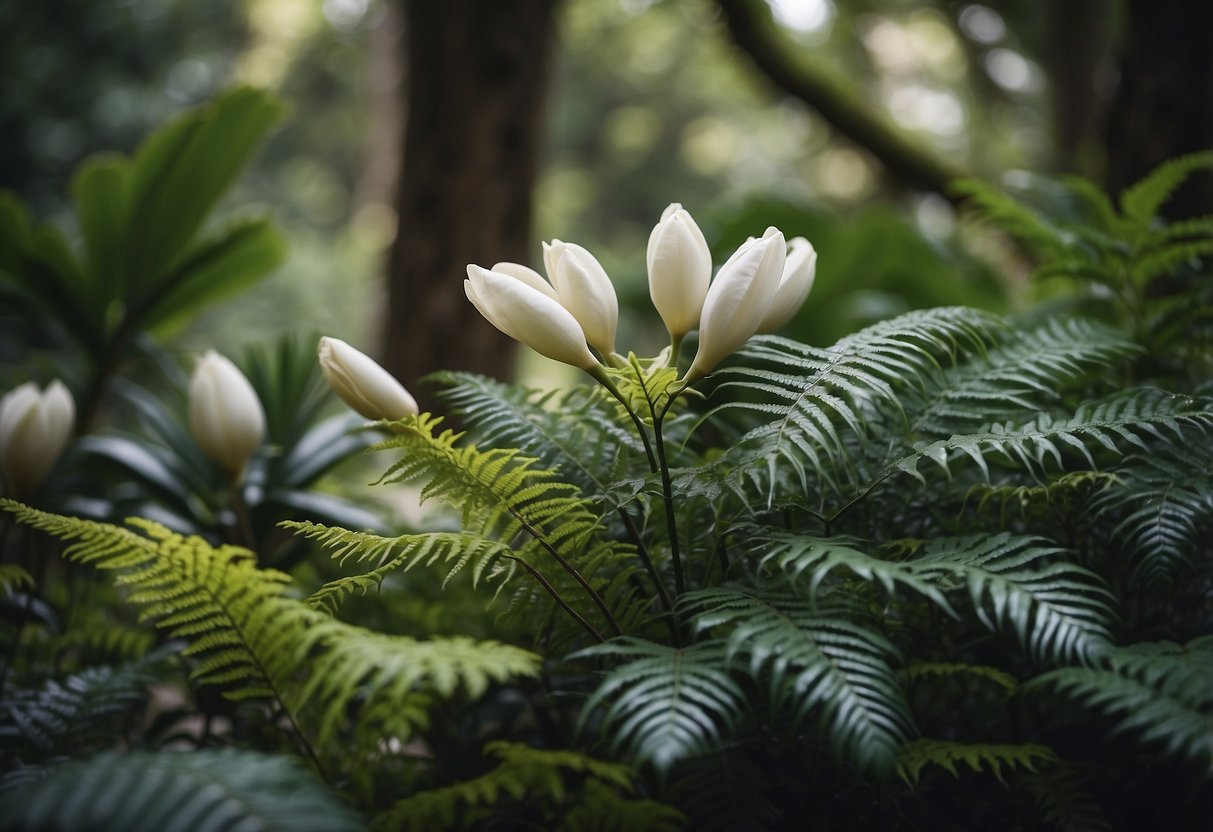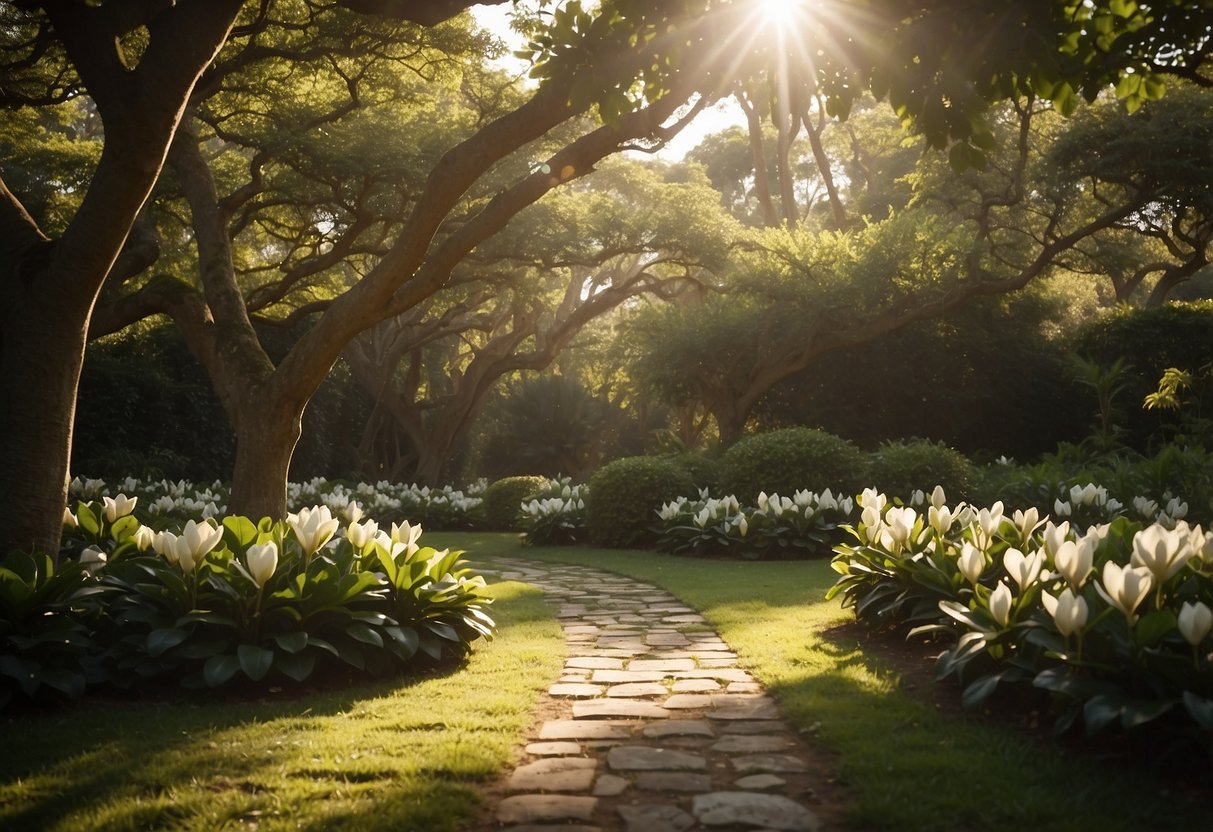Magnolia Garden Ideas: Simple and Stunning Inspirations
Magical and timeless, magnolia trees bring a special charm to any garden. Their stunning blooms and lush foliage make them a favorite among garden enthusiasts. If you’re looking for ways to enhance your garden with these beautiful trees, you’re in the right place.

You’ll discover numerous creative and practical ideas to incorporate magnolias into your landscape. Whether you have a small backyard or a spacious estate, magnolias can effortlessly elevate the beauty and elegance of your outdoor space. Get ready to be inspired!
1) Plant Magnolias as a Garden Centerpiece

Magnolias can make a stunning garden centerpiece. Their large, beautiful flowers will catch everyone’s eye and create a focal point in your garden. They come in various sizes and colors, so you can choose the one that fits best with your garden design.
When planting, make sure to pick a spot with full sun or light shade. They need space to grow, so keep them away from other large plants. Consistent watering is key, especially for young trees, to help them get established.
Adding mulch around the base of the tree will help retain moisture and keep weeds away. By placing a magnolia in the center of your garden, you can enjoy a beautiful, eye-catching tree that enhances your outdoor space.
2) Create a Magnolia-Themed Pathway

A Magnolia-themed pathway can transform your garden into a magical space. Start by lining the path with flowering Magnolia trees. The sight and scent of these trees will create a soothing atmosphere.
Consider installing a bench under one of the Magnolias. This provides a serene spot for rest. Edging the path with flowering Magnolias enhances the inviting feel Gardenia: Magnolia trees.
Pathways also help define the garden layout. Choose materials like gravel, stone, or brick to complement the Magnolias. This combination can make your garden both beautiful and functional.
3) Use Magnolia Blossoms in Floral Arrangements

Magnolia blossoms are perfect for making beautiful floral arrangements. Their large size and graceful curves add elegance to any bouquet.
These flowers have natural, glossy leaves that provide great texture. Mixing in magnolia leaves with the blossoms makes your arrangement even more stunning.
For a natural look, let the flowers guide the shape of your arrangement. Their curves and angles can help you create a design that feels effortless and fresh. You can find more tips from Winward Home.
4) Incorporate Magnolia Trees in Garden Borders

Magnolia trees can be a stunning centerpiece in your garden borders. You can create a garden bed around your magnolia tree with complementary shrubs and flowers to enhance its beauty. Think about adding colorful plants that bloom at different times to keep the area vibrant.
Planting a magnolia tree in a border can also provide some much-needed shade. This allows you to grow shade-loving plants underneath the tree, creating a cozy spot for relaxation.
Lastly, consider using decorative elements like stones or a small birdbath to add charm to your garden border.
5) Plant Dwarf Magnolias for Compact Spaces

Dwarf magnolias are perfect for small gardens. They offer the beauty of larger magnolias but in a smaller package. The ‘Little Gem’ cultivar grows 15 to 20 feet tall, fitting nicely in limited spaces.
Another great choice is the Magnolia Ann. It boasts bright purple-pink flowers and typically stays under 12 feet tall. These trees thrive in neutral or slightly acidic soil, making them versatile for many garden settings.
Consider dwarf magnolias for a beautiful yet compact garden addition.
6) Add Magnolia Shrubs to Enhance Privacy

Adding magnolia shrubs to your garden can create a natural privacy screen. Magnolia shrubs grow thick and produce lush foliage. This helps in blocking views from outside.
Place the magnolia shrubs strategically along the edges of your yard. This setup provides both beauty and privacy. Make sure the planting spots have well-draining soil and get enough sunlight. Happy planting!
7) Design a Magnolia and Fern Mix

Combine the beauty of magnolia trees with the lush greenery of ferns to create a stunning garden. The fern’s soft, wavy fronds add a lovely contrast to the structured elegance of magnolia branches.
Choose ferns like Maidenhair fern for delicate texture or hardy varieties like Holly fern for their resilience and bold appearance.
By planting ferns under and around magnolia trees, you can enhance the visual interest and create a serene, natural atmosphere that will make your garden truly stand out.
8) Decorate Patios with Potted Magnolias

Potted magnolias can bring a touch of elegance to your patio. Their lush green leaves and beautiful blossoms create a relaxing atmosphere.
Place the pots in spots where they get enough sunlight. Magnolias love the sun but also need some shade during the hottest part of the day.
Use different sized pots and group them together for a layered look. This creates visual interest and makes your patio feel more inviting.
9) Utilize Magnolia Foliage for Shade

Magnolia trees can offer ample shade with their large, spreading canopies. This makes them a great option for creating a cool, shaded area in your garden.
Planting shade-loving plants like Solomon’s seal under a magnolia tree can add depth and variety to your garden. The canopy provides protection while the blooms add charm.
Consider setting up a seating area beneath the branches. This can create a peaceful retreat perfect for relaxing or reading a book. Enjoy the natural cooling effect of the magnolia foliage on warm, sunny days.
10) Create a Relaxing Magnolia Meditation Spot

Choose a quiet corner in your garden to set up your magnolia meditation area. This spot should be away from heavy foot traffic and loud noises. A corner shielded by bushes or a wall can provide the peace you need.
Place a comfortable bench or a couple of meditation cushions. Surround this seating with magnolias known for their fragrant blooms and beautiful flowers. Their presence will help you feel calm and relaxed. Consider placing wind chimes nearby to add soothing sounds to your meditation spot. This can enhance the natural ambiance of your space.
The History of Magnolia Gardens

Magnolia Gardens, located in Charleston, South Carolina, has a rich history that spans centuries. It showcases the beauty and cultural importance of its landscapes and structures.
Origins and Evolution
Magnolia Gardens began in the 1670s when Thomas Drayton and Ann Fox Drayton first acquired the property. The Drayton family owned the plantation and transformed it into one of the oldest public gardens in America.
After the Civil War, Reverend John Drayton decided to open the gardens to the public to generate income and preserve the estate. By the late 19th century, Magnolia Gardens was recognized in Baedeker’s Guide to the United States as a leading American attraction.
Over the years, the gardens expanded to cover 464 acres, featuring diverse plant species and scenic design elements. Key design themes include reflecting ponds and sculptural plants, utilizing the surrounding water bodies like the Ashley River creatively.
Cultural Significance
Magnolia Gardens holds a special place in the hearts of many who visit. The gardens are a living testament to the South’s history and natural beauty. Visitors have enjoyed these gardens since the 1870s when they were opened to the public.
The space has not only served as a peaceful retreat but also as an educational site. The gardens link past generations with the present through their timeless beauty and cultural relevance.
Present-day visitors can still see the influence of historical design principles, such as reflection and symmetry. Magnolia Gardens remains on the National Register of Historic Places, reflecting its long-standing importance in American horticulture and history.
Designing Your Magnolia Garden

Creating a magnolia garden involves thoughtful planning to ensure stunning visual appeal. You need to choose the right magnolia varieties and combine them with other plant species for a harmonious design.
Planning and Layout
Start by assessing your space and its light conditions. Magnolias often need plenty of sunlight to thrive. Decide on focal points where the magnolia’s beauty can be fully appreciated.
Position your magnolia tree where it can be seen from your home and enjoyed in outdoor areas. Space trees based on their mature size to avoid overcrowding. Think about pathways and seating areas to enhance the garden experience.
Choosing the Right Magnolia Varieties
Selecting the best magnolia variety depends on your garden size. For small gardens, consider options like the Little Gem Magnolia or Sweetbay Magnolia which are compact and easy to manage.
In larger gardens, the Southern Magnolia can make a grand statement with its big, fragrant blooms. Each variety has unique features, so pick one that fits your garden’s climate and aesthetic.
Incorporating Other Plant Species
Other plant species can complement magnolias beautifully. Think about colors, textures, and bloom times. For example, azaleas and camellias can provide color contrasts, while ferns and hostas add interesting foliage.
Use flowering perennials and annuals to fill gaps and add seasonal interest. Varying plant heights can create layers and depth in your garden, making it more dynamic and visually appealing.
Caring for Magnolia Plants

Caring for magnolia plants requires attention to soil quality, consistent watering, thoughtful pruning, and pest control. Proper care ensures beautiful blooms and healthy growth.
Soil and Fertilization
Magnolias thrive in rich, well-drained soil. Ensuring the soil is slightly acidic, with a pH between 5.5 and 6.5, helps the plant absorb nutrients effectively. Test your soil to check its pH level.
You can amend the soil with compost or organic matter to improve its structure and nutrient content. Mulch around the base with a 2-3 inch layer of pine bark or wood chips to retain moisture and regulate soil temperature.
For fertilization, use a balanced, slow-release fertilizer like 10-10-10 in early spring. Avoid over-fertilizing as it can harm the plant. Apply fertilizer evenly around the drip line of the tree, and water thoroughly after application to ensure the nutrients reach the roots.
Watering and Pruning
Watering your magnolia regularly is crucial, especially in the first few years after planting. Water deeply once a week to encourage deep root growth. During hot, dry periods, you may need to water more frequently.
Pruning magnolia trees should be done sparingly. The best time to prune is late winter or early spring, before new growth begins. Remove dead or diseased branches to improve air circulation and reduce the risk of infections. Prune selectively to maintain the tree’s natural shape.
Be cautious not to over-prune as it can stress the tree. Always use clean, sharp tools to make clean cuts, and avoid pruning large branches unless absolutely necessary.
Pest and Disease Management
Magnolias can be susceptible to various pests and diseases. Common pests include scales, aphids, and spider mites. Regularly inspect your trees for signs of infestation, like discolored leaves or sticky residue.
If you notice pests, treat them with insecticidal soap or horticultural oil. For severe infestations, you may need to use specific insecticides.
Diseases such as blight, mold, and canker can also affect magnolias. To prevent these, ensure good air circulation and avoid overhead watering. Remove any infected branches and dispose of them properly. Consider applying a fungicide if you see signs of disease.
Regular monitoring and prompt action are key to keeping your magnolia trees healthy and vibrant.







